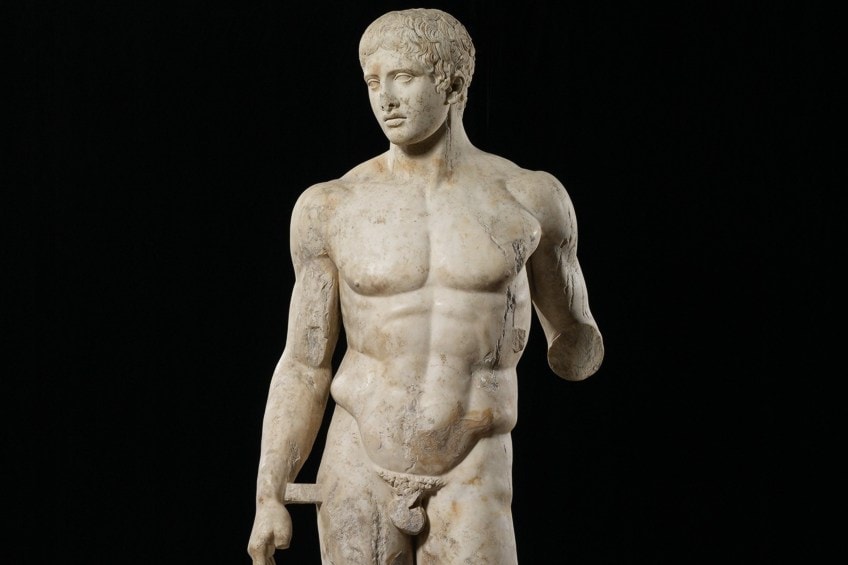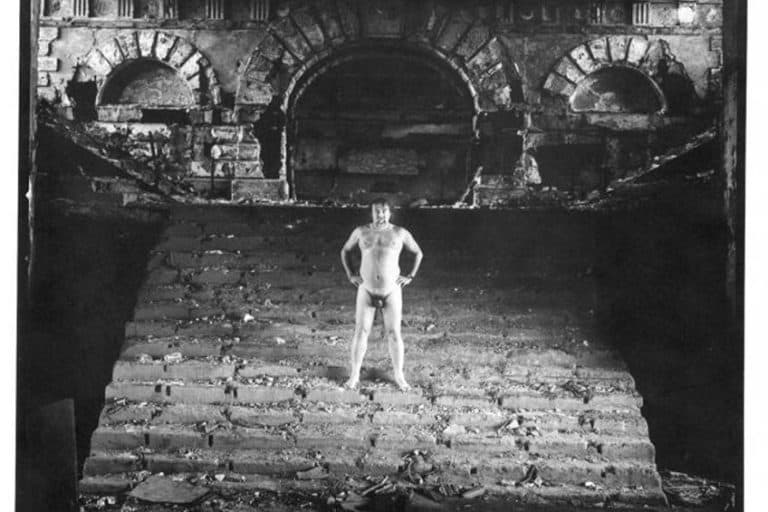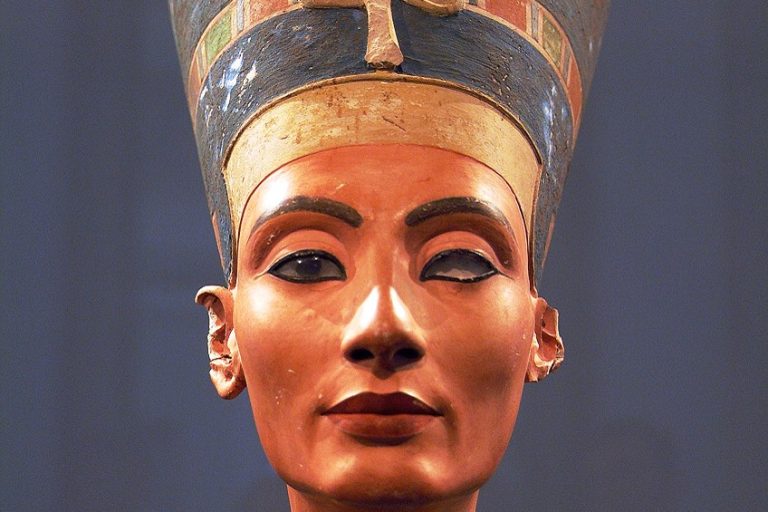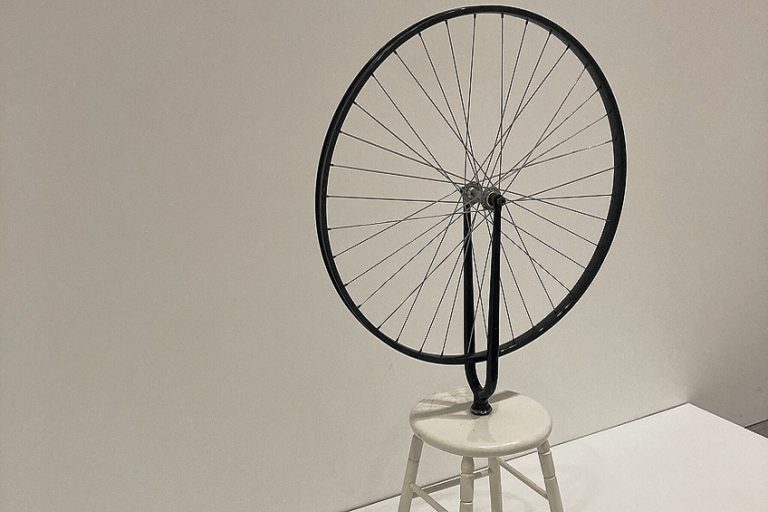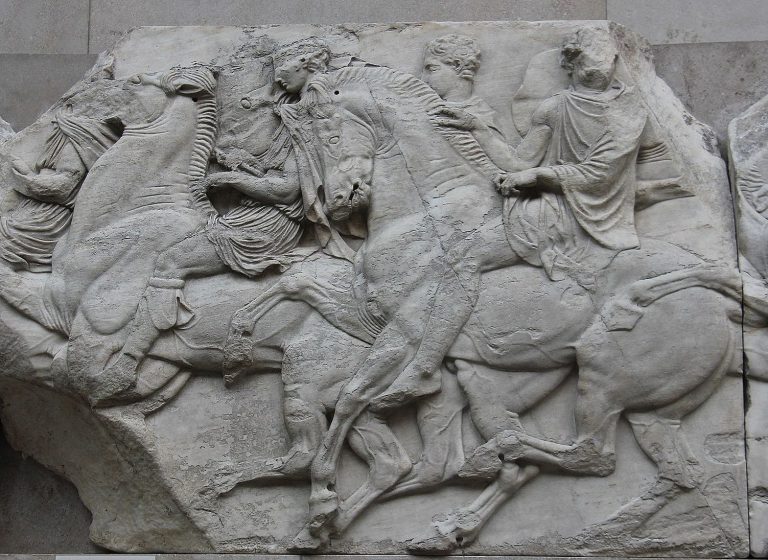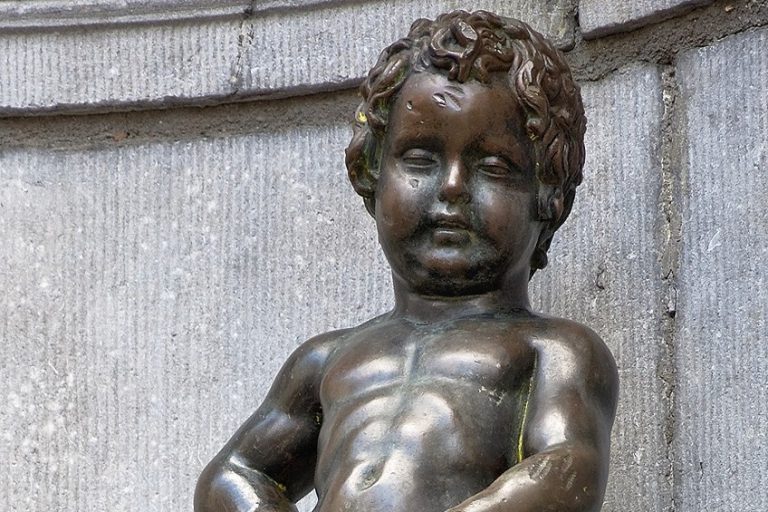Spear Bearer Doryphoros – An Analysis of This Famous Greek Sculpture
The Greek sculpture, the Spear Bearer Doryphoros is world-renowned and portrays a well-built warrior. The Doryphoros of Polykleitos initially featured a spear, hence the name of the Spear Bearer sculpture. The Doryphoros sculpture is a very important instance of Classical Greek realism. But when was the Spear Bearer created? And why was Doryphoros, or Spear Bearer, famous throughout the ancient world? Let us find out more.
The History of the Spear Bearer Doryphoros
The missing bronze prototype of the Doryphoros sculpture, portrayed somewhat larger than life-size, would have been cast around 440 BC, but it is currently only recognized from later (mostly Roman era) marble replicas. Polykleitos, a prominent Greek sculptor, created a sculptural piece as a presentation of his textual treatise that illustrated what he regarded to be the absolutely balanced and harmonious dimensions of the human body in the sculptural form.
The renowned spear bearer sculpture had a significant impact on other ancient art forms.
| Date of Creation | c. 120 – 50 BCE (replica) c. 440 BCE (original) |
| Location Found | Pompeii (replica) |
| Artist | Polykleitos (original) |
| Medium | Bronze (original) Marble (replica) |
The Conception of the Doryphoros of Polykleitos
The Greek medical author Galen remarked about the Doryphoros in the 2nd century AD as the ideal aesthetic embodiment of the Greeks’ yearning for balance and elegance, which is expressed in the ideally proportionate carved male nude: Chrysippus believes that beauty consists not in the ratios or commensurability of the component aspects of the body, but in the paired comparison of the sections, such as that of palm to palm, and of all the digits to the palms and wrists, and those to the forearms, and of the forearms to the upper arms, and, in reality, of all of it to everything else, as written in Polykleitos’ Canon.
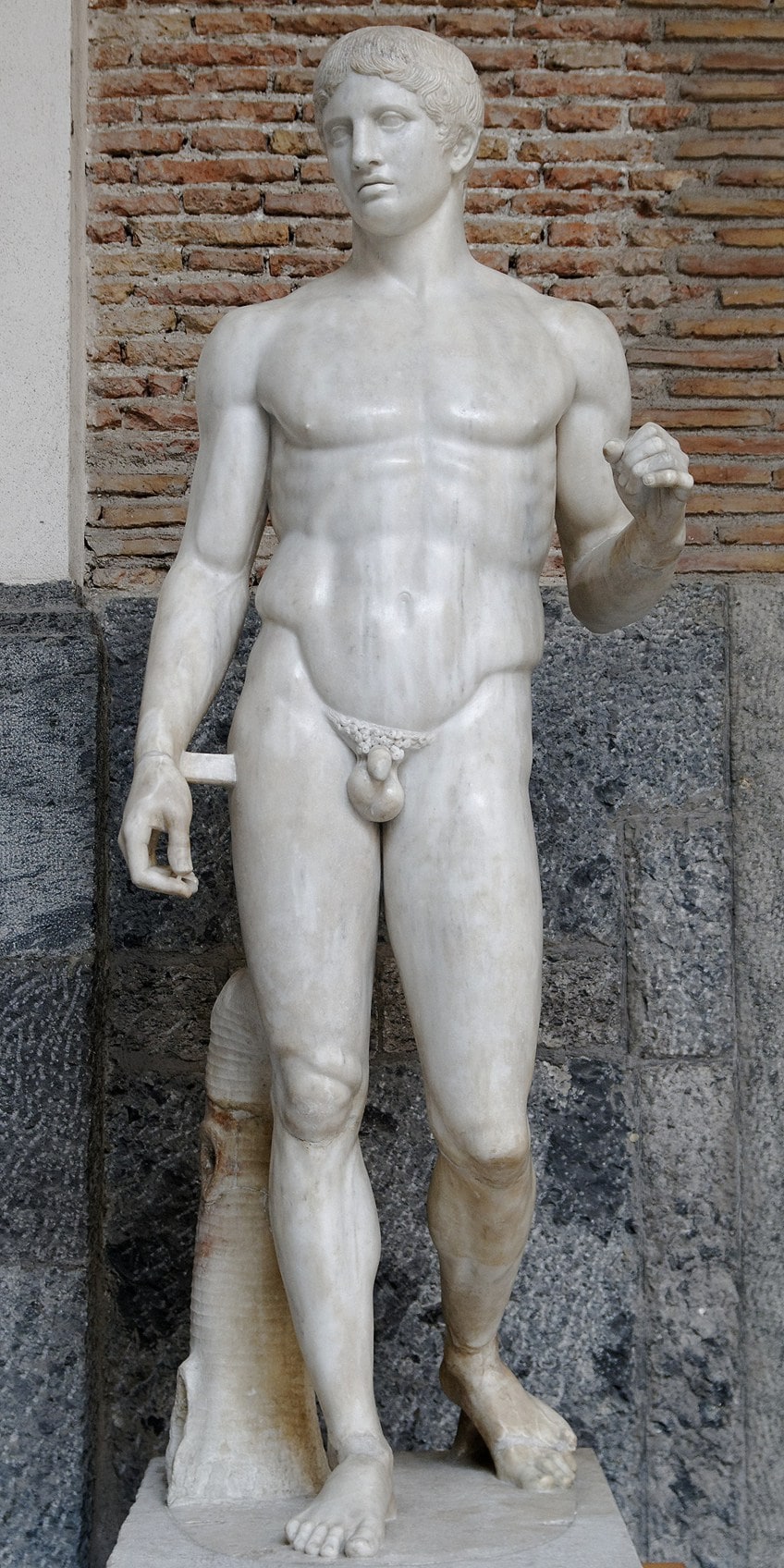
Polykleitos is regarded as the greatest male sculptor, with his principal themes being male sportsmen with perfect body ratios. He was fascinated by the quantitative dimensions of the physical figure, which drove him to create the Canon, a dissertation on body features. The Doryphoros of Polykleitos is an instance of his Canon teachings on the harmony of bodily parts. Polykleitos used the chiastic concept to establish an equilibrium between muscle contractions and relaxation.
“Scholars concur that Polykleitos used a single module, maybe the terminal portion of the little finger, to calculate the equivalent measurements of each bodily component.”
Description of the Spear Bearer Doryphoros
The Doryphoros sculpture is a marble replica from Pompeii that dates between 120 and 50 BC. The original, constructed of bronze around 440 BC, is now gone. Neither the initial sculpture nor the dissertation has been discovered; it is usually assumed that they did not survive antiquity. Thankfully, many Roman marble replicas of different quality and wholeness have survived to portray the core shape of Polykleitos’ masterpiece. The famous Greek sculpture is around six feet tall.
Polykleitos employed specific ratios to create this piece; for example, the head-to-body ratio is one to seven.
The heavily-muscled but dynamic physique of the Spear Bearer sculpture is represented poised at the moment when he advances forward from a static stance, with his head tilted slightly to the right. This stance depicts merely the tiniest incipient motion, but the extremities and body are totally responsive. The left hand once clutched a lengthy spear; the left shoulder (upon which the weapon formerly lay) is strained and so somewhat lifted, with the left arm flexed and strained to keep the spear in place.
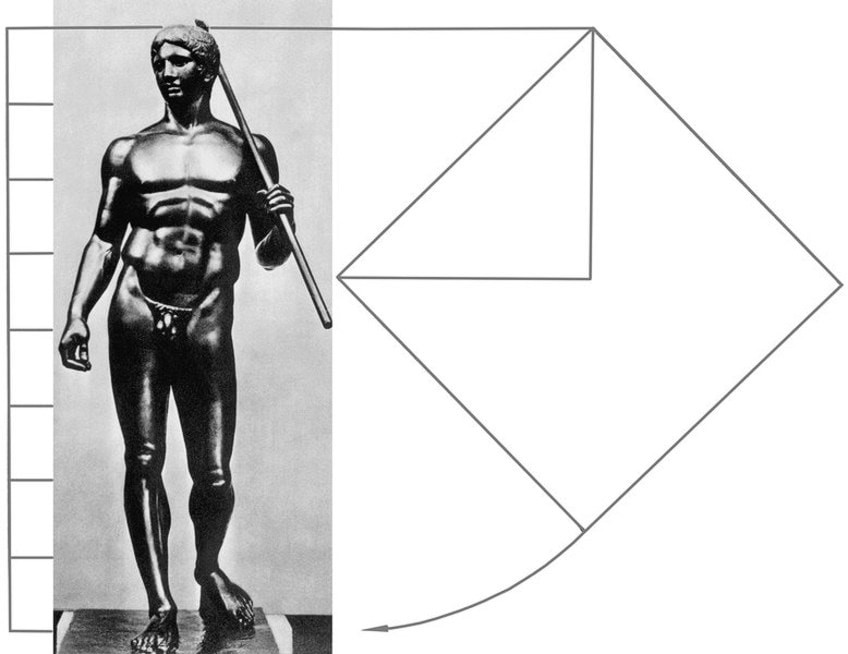
The attitude of the subject is traditional contrapposto, as seen by the tilted location of the pelvis. The right leg of the figure is extended, as if it is sustaining the weight of the upper body, with the right hip elevated and the right torso constricted. The left leg is weightless, and the left hip is lowered, somewhat expanding the body on the left side. The right arm swings at the model’s side, carrying no weight. A massive carved tree stump is inserted behind one leg of the sculpture in the remaining Roman marble replicas to hold the load of the marble; it would not have been there in the initial bronze as the strength of the bronze would have deemed it superfluous.
In most cases, a tiny strut is also provided to maintain arm and hand.
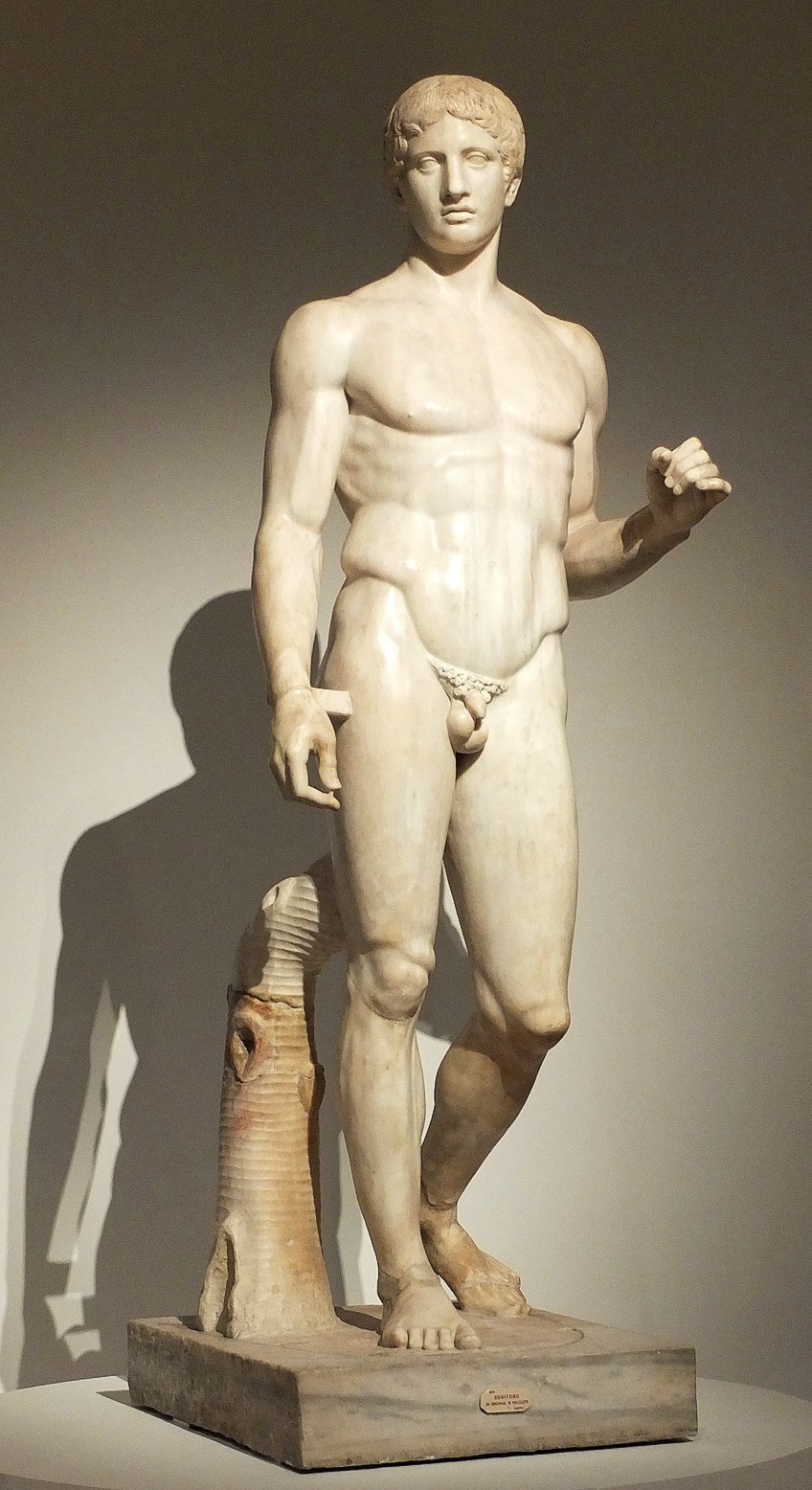
Even though the Doryphoros sculpture portrays a soldier primed for combat, he is not wearing any armor or other safety clothing. In truth, if it hadn’t been for the genuine weapon that the sculpture was holding, it might have been hard to recognize him as such. Masculine nudity or openness, a feature of classical Greek art, was viewed as a symbol of civilization that distinguished the Greeks from their “savage” rivals.
Many of the most important Greeks of the time, including painters, authors, intellectuals, and statesmen, were concerned with the idea of striving for excellence while acknowledging that such completeness was unachievable.
Doryphoros’ face is lacking distinguishing traits, implying that he is supposed to symbolize an idealistic form of the ordinary man, the perfect Greek masculine inhabitant (women somehow were not regarded as citizens). However, his physique – proportionate, balanced, nude, powerful, and confident – is one that the audience may aspire to, but never reach.
Copies of the Doryphoros Sculpture
The marble statue and bronze head discovered at Herculaneum were not recognized as Polykleitos’ work until 1863. A partial Doryphoros body in basalt in the Medici collections at the Uffizi “expresses the appearance of bronze and is done with exceptional care,” as Kenneth Clark observed: “It maintains some of the intensity and focus of the predecessor” absent in the full-size “boxy” marble replicas. The best-known version of the Doryphoros was discovered in Pompeii and is currently housed in Naples’ Museo Nazionale. A bronze herma of Apollonios, housed in the very same museum, is regarded by many experts to be an almost faultless reproduction of the genuine Doryphoros head.
The Minneapolis Institute of Art bought a Roman-era duplicate of the Greek sculpture in Pentelic marble in 1986, and it has received the greatest interest in subsequent years.
The fine replica, which is mostly complete besides the bottom left arm and digits of the dominant wrist, has been assigned to the era 120 to 50 BC and also the mid-Augustan era. According to the Minneapolis Institute of Art, the replica was discovered in Italian seas in the 1930s and remained several years in private Italian, and Canadian collectors before emerging in the art market about 1980. Italy is still claiming the Spear Bearer sculpture’s return since it was unlawfully dug and shipped from Stabia.
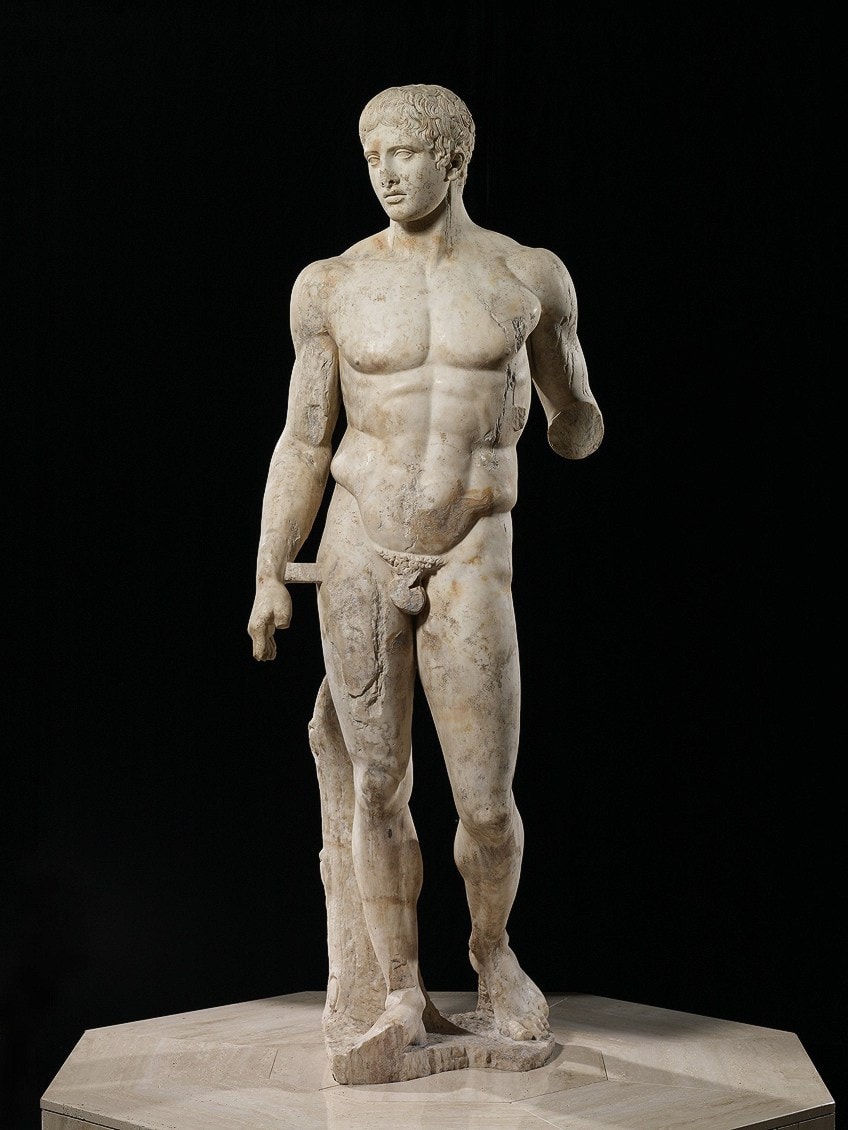
The Minneapolis Institute of Art’s Doryphoros of Polykleitos is in excellent shape, particularly given its antiquity. Excluding the left arm, all of the fractures in this facsimile are old. The head is still undamaged. There are some significant scrapes on the side, and the markings on his face and arms are from plant roots, implying that this duplicate has been buried for generations. It was discovered in six parts and has since been rebuilt.
The Doryphoros sculpture has undergone minor repairs, such as “a steel pin placed into the tree trunk that supports the right leg, and the artwork has been reconstructed from the six fragments in which it was discovered.”
Influence of the Spear Bearer Doryphoros
During the high Classical era, the Doryphoros sculpture was invented. During this period, there was a focus on the ideal male, who was shown in majestic nudity. The physique would be that of a youthful sportsman, with sculpted muscles and a realistic pose. The expression on the face is emotionless.
Some academics believe the Doryphoros of Polykleitos depicted a youthful Achilles on his way to combat in the Trojan War, while others feel the statue is unclear whether it depicts a human or a god.
There were also debates over where these statues may have been found during the high Classical era. For instance, the duplicate in Naples was discovered in the public Gym of Pompeii, leading us to infer that one may have been put near juvenile training activities. Duplicates were also commonly used by customers to put inside or the exterior of their homes.
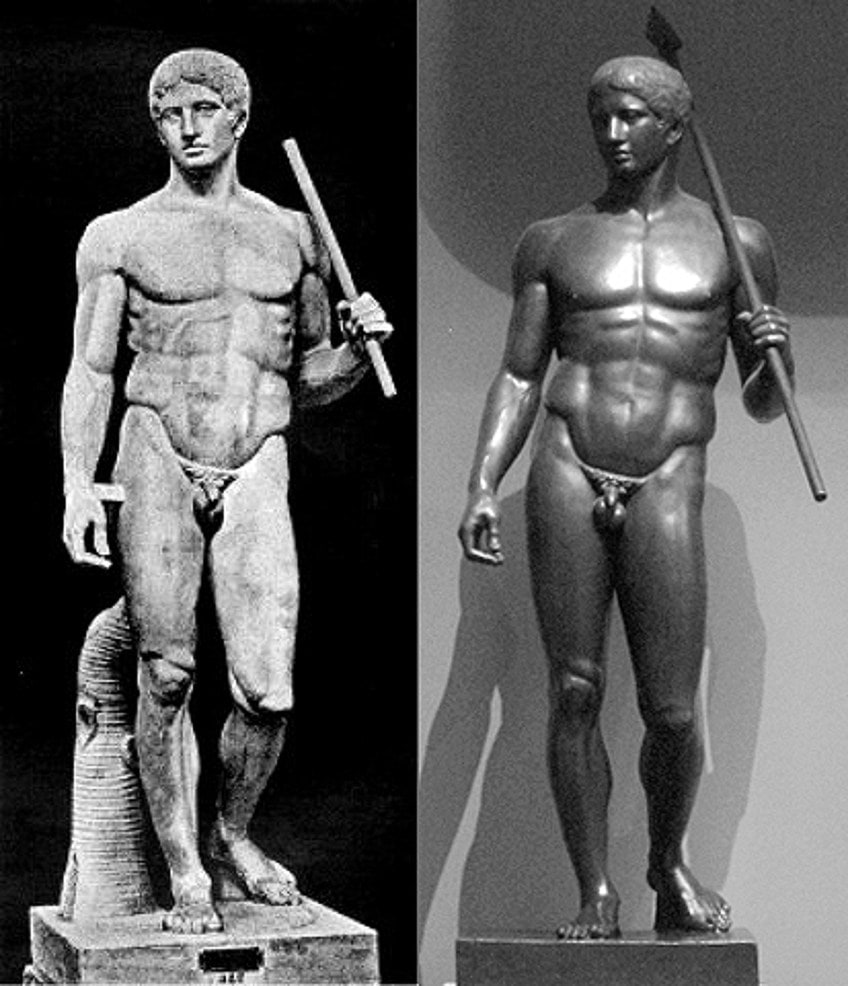
Polykleitos’ canonic measurements of the masculine body entrenched in Archaic and Classical periods in the muscle cuirass, as typified by the Augustus of Prima Porta , who wore formal ceremonial armor sculpted in elevation over an idealized version of muscular body purportedly fashioned on the Doryphoros sculpture. The emperor’s legs are placed in a similar way as the Spear Bearer sculpture’s posture in the same image. Yet another instance of the Spear Bearer Doryphoros‘ effect on sculptures much later than its inception may be seen in David by Michelangelo.
The contrapposto technique, idealized young masculine nakedness, and general antiquity all have overtones in the Doryphoros sculpture. There is indeed a likelihood, though, that the David was constructed with the broader aesthetic contrapposto proportions that Polykleitos popularized as a consequence of his works in view, as evidenced in the referenced Prima Porta statue or the monument of the Apollo Belvedere.
And that concludes our exploration of the Spear Bearer Doryphoros. The Greek sculpture is world-renowned and portrays a well-built warrior. It is regarded as an important instance of Classical Greek realism due to its natural stance. Although the original has been lost to time, there are luckily many Roman replicas that help give us a clear picture of what the original looked like.
Frequently Asked Questions
When was the Spear Bearer Created?
The famous Greek sculpture was made around 440 BCE. It was created by Polykleitos and was a physical representation of his treatise. Today there are Roman copies that exist of the original. The original was said to be made from bronze.
Why was Doryphoros, or Spear Bearer, Famous Throughout the Ancient World?
Polykleitos, as a contemplative theorist, was intrigued by the algebraic problems posed by the human shape. The Canon is an essay he wrote on the topic of human dimensions. Polykleitos created the Doryphoros as a demonstration of his treatise’s views on symmetry between human bodily parts. His analytical method resulted in a basic yet well-balanced figure that rapidly became a prototype of the Classical aesthetic. The Doryphoros was widely reproduced, and it is likely that it was the one piece of Greek artwork that had the most effect on Roman and subsequent art.
Why Is the Doryphoros Sculpture So Important?
The Spear Bearer sculpture is one of the numerous variations of the same artwork produced under the Roman Empire. The bronze prototype on which these would be fashioned is no longer available. The Doryphoros, notable for its symmetry and idealized dimensions, is considered as one of the best-known specimens of Greek sculpture from the 5th -century BCE and a picture of ideal manhood. He had to have been created before the eruption of Vesuvius in 79 CE, which buried Pompeii and everyone and everything. Few genuine bronzes exist today, but Roman artists replicated them widely in stone. Polykleitos’ initial Doryphoros was armed with a spear that sat on his left shoulder, and the sculpture could have stood on its own. (For stability, a tree trunk or other brace was commonly added to stone reproductions.)
Who Was Polykleitos?
Polykleitos was a bronze artist from the 5th century BCE in ancient Greece. He is regarded as one of the most significant sculptures of classical times, besides the Athenian artists Praxiteles and Myron. Pliny’s guidebook in things of painting, the 4th century BCE inventory ascribed to Xenocrates, classified him between Pheidias and Myron. He is well known for the Canon of Polykleitos, a historical work (a standard of body shape) that lays forth his mathematical foundation for an idealized version of masculine body type.
What Did the Spear Bearer Exemplify?
The Spear Bearer sculpture exemplifies the new method of representing the human figure in Greek art during the High Classical Period. The idealized male was increasingly emphasized by artists, who showed him in gallant nudity with a youthful, muscular figure that was lifelike in muscle and stance. The idealist of the Classical style distinguishes it; faces are generalized with no expression or unique traits, while proportions are sleek, strong, and proportioned. Classical statues feature a feeling of mobility, as opposed to Archaic kouros, which stood rigid in an artificial stance drawn from Egyptian figures. This is done using a position known as contrapposto. The Doryphoros stands in this position, with one straight leg supporting the weight and the other bending and resting. The forearms, one of which is extended while the other hangs loosely by the side, balancing the legs. The motion, strain, and changing weight all contribute to the illusion of movement.
Isabella studied at the University of Cape Town in South Africa and graduated with a Bachelor of Arts majoring in English Literature & Language and Psychology. Throughout her undergraduate years, she took Art History as an additional subject and absolutely loved it. Building on from her art history knowledge that began in high school, art has always been a particular area of fascination for her. From learning about artworks previously unknown to her, or sharpening her existing understanding of specific works, the ability to continue learning within this interesting sphere excites her greatly.
Her focal points of interest in art history encompass profiling specific artists and art movements, as it is these areas where she is able to really dig deep into the rich narrative of the art world. Additionally, she particularly enjoys exploring the different artistic styles of the 20th century, as well as the important impact that female artists have had on the development of art history.
Learn more about Isabella Meyer and the Art in Context Team.
Cite this Article
Isabella, Meyer, “Spear Bearer Doryphoros – An Analysis of This Famous Greek Sculpture.” Art in Context. November 12, 2021. URL: https://artincontext.org/spear-bearer-doryphoros/
Meyer, I. (2021, 12 November). Spear Bearer Doryphoros – An Analysis of This Famous Greek Sculpture. Art in Context. https://artincontext.org/spear-bearer-doryphoros/
Meyer, Isabella. “Spear Bearer Doryphoros – An Analysis of This Famous Greek Sculpture.” Art in Context, November 12, 2021. https://artincontext.org/spear-bearer-doryphoros/.


